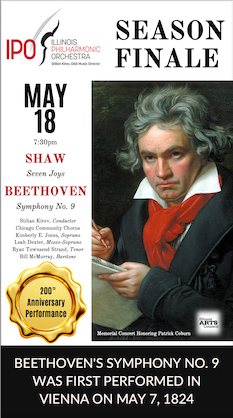Galway shows relaxed charm at Ravinia

The muggy weather and intermittent cloudbursts didn’t seem to adversely affect lawn turnout for the return of Sir James Galway to the Ravinia Festival Sunday evening. (The pavilion was another matter, with score of empty seats, a common sight at the festival’s classical events this summer.)
In the first of his two appearances this week, the celebrated Irish flutist served up a program that reflected his orchestra collaborations over the last decade or more, with a solo display vehicle for himself and a double-flute confection to share with his wife, Lady Jeanne Galway.
Galway, who will turn 70 in December, has little to prove at this point with a string of top-selling recordings and a fixed status for decades as one of the classical world’s most popular personalities. Still, one wishes his concerts would challenge his listeners a bit more as well as himself. While the two opera paraphrases were performed with polish and style, there was a somewhat tired, obligatory air about the proceedings. (Perhaps Galway’s crossover collaboration with the Cuban jazz ensemble Tiempo Libre on Tuesday will throw off more sparks.)
Borne’s Fantaisie brillante—further revised by Galway—- is pure fluff in its retooling of themes from Bizet’s Carmen for flute and orchestra but enjoyable enough on its own slender terms. Galway started a bit sharp but found the range quickly enough, displaying his agility and pure high notes with James Conlon and the Chicago Symphony Orchestra lending close support.
Lady Jeanne Galway joined her husband for the Brothers Doppler’s Fantasie et variations on music from Verdi’s Rigoletto, orchestrated by Claudio Scimone. As a duo-flute showpiece there’s not much contrast or variety between the two solo lines but the Galways performed the work gracefully and with aplomb.
As is often the case with Itzhak Perlman, if Galway’s official program seemed a bit dutiful, his playing proved more communicative in the lighter encores. Showing his trademark wit and Irish charm the flutist spun a yarn about discovering a duo-flute arrangement of Mozart’s Rondo alla turca stuck in a fax machine (using “Windows 1776”) at the composer’s birthplace museum in Salzburg. Galway and his wife performed the arrangement with just the right light vivacity.
Galway’s unorthodox encore suite of Irish music and Bach may not be musicologically correct but it provided his best playing of the evening. The flutist brought point and incisiveness to Brian Boru’s March, and a refined expression and unhackneyed simplicity to the obligatory Danny Boy. A lightning performance of Bach’s Badiniere from the Second Orchestral Suite showed Galway still has considerable technical chops.
The most substantial music of the evening was heard on the first half with Mozart’s Wind Serenade in B flat, K.363. Even by Mozart’s standard, the Gran Partita‘s fecund melodic wealth is remarkable with its array of instrumental combinations and hues for thirteen winds (including basset horns) and double-bass.
The Serenade’s relaxed expansiveness and rustic feel make it well suited to al fresco listening, and with consistently well-judged tempos by Conlon, the CSO players brought out all the ineffable beauties of this extraordinary score. In the rarefied opening passage of the Adagio, the temperature suddenly dipped a few degrees and a cooling breeze lifted, providing a perfectly timed meteorological counterpoint to one of Mozart’s most indelible inspirations.
Posted in Performances





